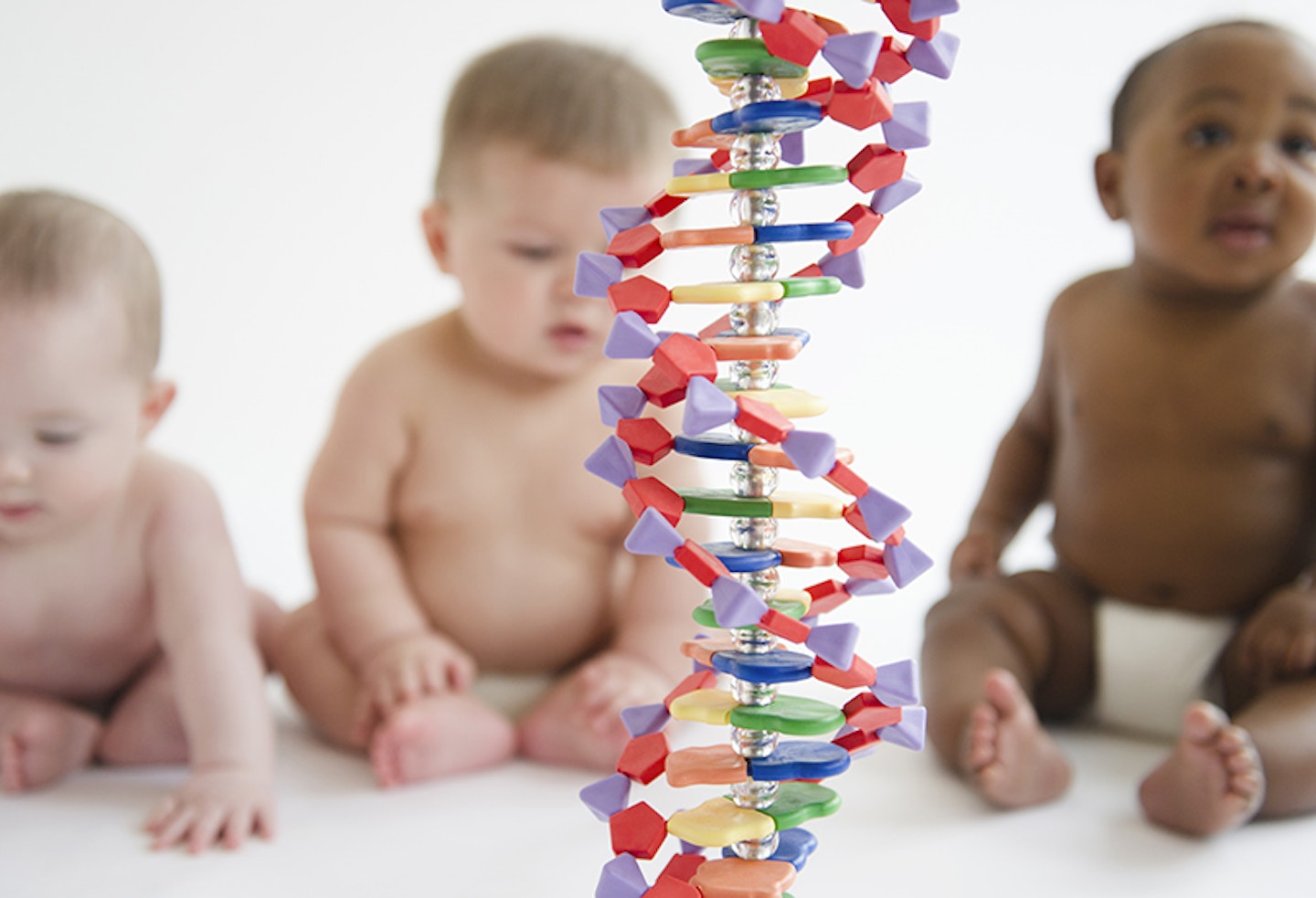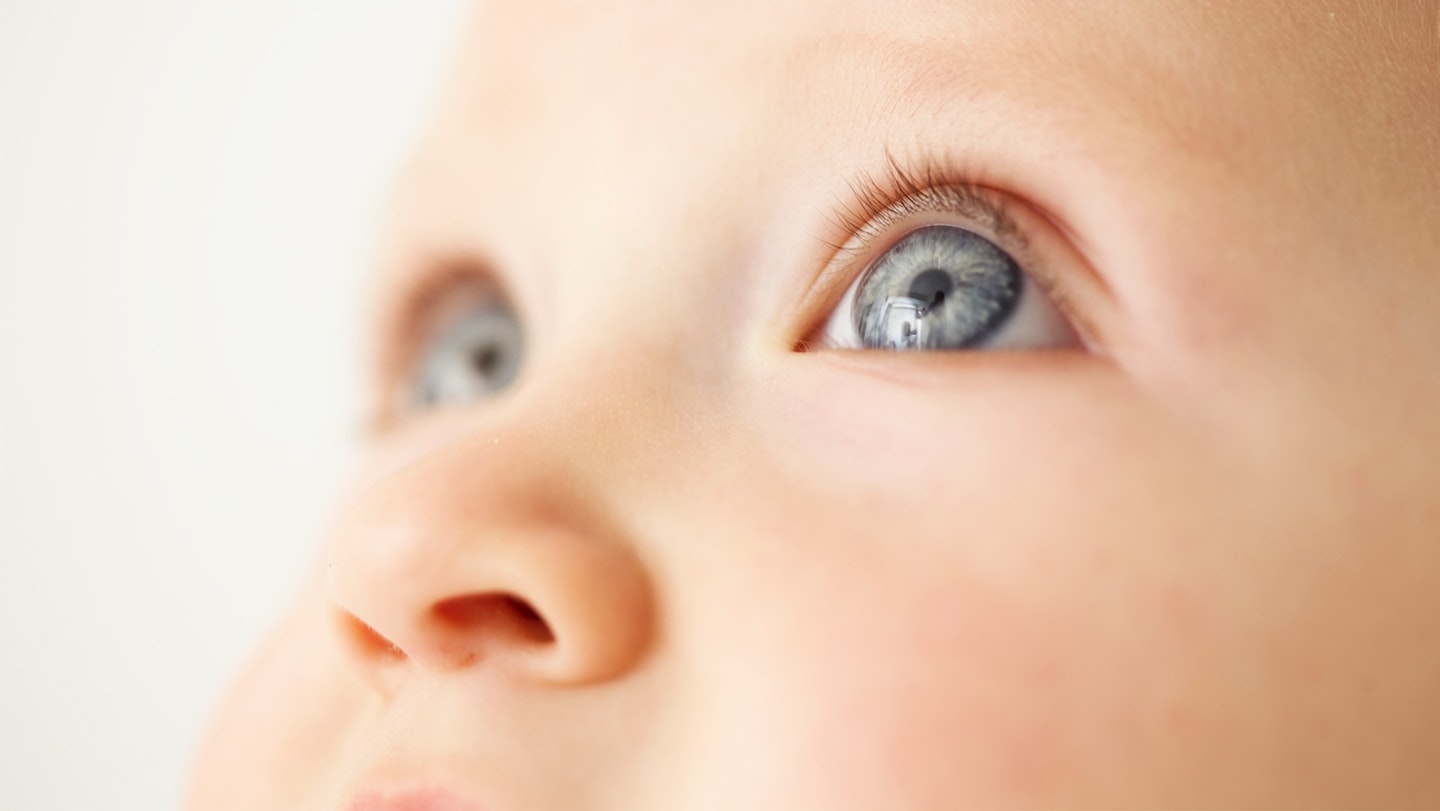Nothing can replace the excitement of meeting your newborn for the very first time. But while you’re ticking off your hospital bag checklist, shopping for those newborn essentials and counting down the days until the birth of your new baby, it’s fun to speculate just what your baby will look like.
Will they have your eyes? Your chin? Your partner’s curly hair? While there are no certainties when it comes to babies, you can work out the probability of them inheriting particular characteristics from you and your partner.
How genetics work
It’s all in the genes, you see. Genes are tiny instructions that decide what we look like. Half come from the egg, half from the sperm.
Some characteristics, like eye and hair colour, are controlled by a single pair of genes, called alleles. An allele can either be dominant or recessive – and the dominant allele will always win the battle over the recessive allele, and determine the outcome.
You or your partner might not have a certain trait, but it doesn’t mean you don’t carry the allele for it. Genes can remain recessive for many generations. Look at photos of grandparents and great-grandparents for clues of recessive alleles that might be lurking in your genes.

Hair colour
The colour of our hair is determined by the amount of pigment (known as melanin) present. For example, a large amount of one type of pigment, eumelanin, results in black or brown hair while very little eumelanin will give your baby blonde hair. An abundance of another pigment, pheomelanin, is responsible for red hair.
While we know that babies inherit many pairs of genes from each of their parents which plays a large part in their appearance, it is unknown exactly how many genes are required to determine a baby's hair colour. And actually, sometimes the results can be surprising.
For example, you and your partner may both have dark hair but you each might carry a blonde-hair gene which you then pass on to your baby who is born with fair hair. This is why siblings can sometimes end up with different hair colours despite having the same parents.
And remember, your baby's hair colour can change over time, so even if they are born with blonde hair, there is every chance this could turn brown later down the line.
Straight or curly hair
If you have curly hair, chances are your baby will too. Curly is the dominant allele over straight hair, so if you inherited your grandma’s corkscrew locks, you’ll probably pass that gene on to your child. If you and your partner have poker-straight hair, then your baby has a high chance of inheriting the same.
Eye colour
The majority of babies are born with blue-grey coloured eyes. Then, once the colour-producing cells in the iris of the eye have had the exposure to light to activate, baby's eye colour will stabilise. The majority of the time, this will happen by around six months. However, babies eyes can actually change colour until about three years old.
Just like with hair colour, your little one's eye colour is determined by melanocytes. Over time, if melanocytes only secrete a small amount of melanin, baby will have blue eyes. If they secrete a bit more melanin, the eyes will appear green or hazel. When melanocytes secrete a lot of melanin, this is when brown eyes occur.
The genes that influence how much the melanocytes produce come in two alleles: one that has brown and blue versions and one that has blue and green versions. Your baby's eye colour will depend on the combination of alleles they inherit from both parents.
Brown eyes are a dominant trait and blue eyes are recessive. If you and your partner each carry two brown-eyed genes, you’re likely to have a brown-eyed baby. If both of you have a blue-eyed recessive gene, there’s a one-in-four chance your baby will have blue eyes.

Height and build
Despite what your baby may measure or weigh at birth, this will not necessarily provide an accurate representation of what their future height and weight may be. This is because there are several factors such as diet and health conditions that can influence a baby's birth size. In fact, experts believe more than 100 genes can affect height, regardless of any initial measurements.
While there are certain ways which are believed to help predict your baby's future height, there's nothing foolproof, especially as along with the generic factors, things such as diet and physical activity can also play a role.
Other qualities
Being double-jointed
Some people have the ability to bend their thumbs right back towards their hands, which means they carry the dominant allele. If you do not have double-jointed thumbs, then you have the recessive allele, and your baby is unlikely to inherit the trait unless your partner has the ability.
Widow’s peak
Do you have the trademark V-shape in your hairline, in the middle of your forehead, known as a widow’s peak? This is a dominant trait.
Dimples
Dimples are a dominant trait, so if both you and your partner have this strong physical feature, then your baby is three times more likely to as well. Aww!
Face shape
Round or oval shapes are the dominant allele, while a square shape is recessive.
Cleft chin
A cleft or ‘dimple’ chin is an inherited trait and a dominant allele.
Freckles
Freckles are usually found on fair-haired, light-skinned people and are a dominant trait.
Can an app predict what my baby will look like?
There are some apps and websites where you can upload a photo of yourself and your partner and then the app will fuse these together to generate what your baby could look like. While there is no scientific data to back these apps up and a child's physical appearance is unlikely to be a 50/50 blend from both parents, they can be a lot of fun and are at least guaranteed to generate plenty of laughter. Fancy giving it a go? Out some of the apps and websites below:
BabyGenerator- Predict your future baby face - available on Android, this app uses artificial intelligence to analyse you and your partner's facial features, to try and give you a good prediction of what your baby will look like. If you have an iPhone search for ‘BabyGenerator Guess Baby Face’ instead.
Future Baby Face Generator - available for iPhone users, this number 1 baby app is super user-friendly and simply requires you to upload a picture of you and your other half, hit the ‘analyse’ button and voila, you’ll be presented with your future baby.
Makemebabies.com - this free baby generator website is simple to use and a lot of fun. If you don’t have a partner, but are just keen to know what your babies could look like, you can pick from their list of celebs instead. I’m afraid we can’t promise you’ll meet Brad Pitt any time soon though...
What if my baby looks nothing like me?
Despite what or who your baby looks like, they share 50 per cent of your DNA and are part of you regardless. Instead of focusing too much on the physical traits they may have inherited, make the most of having them in your life and enjoy spending time getting to know them as an individual.
Meet the expert: Dr Judith Virjee is a consultant physician who studied molecular genetics and biochemistry.
